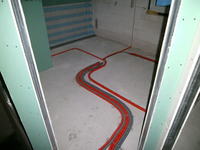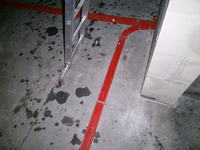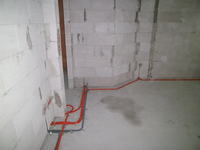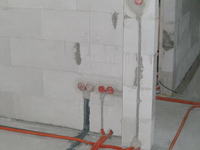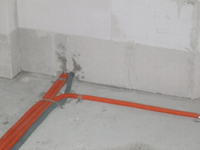Hello!
I bought a perlon pilot (haupa) for threading cables with a length of 20m, diameter 3mm, both sides have appropriate terminals (lead spring, pulling head). It was rolled into a small circle. After removing the wires protecting against unfolding, the pilot "relaxed" a bit.
With its help, I am going to insert a conduit into a conduit with a length of 8m and 11m. The conduit has an inner diameter of 11mm and 3-4 gentle bends at an angle of 90 degrees.
The pilot runs very smoothly at first, but then there is increased drag until it stops. I suppose the reason is the springy shape which increases the pilot's friction in the conduit and prevents it from being brought to the correct length. I assume that after it is straightened it can be inserted to the end.
At the moment, the pilot is stretched along its entire length, this is how I try to straighten it.
Has anyone encountered a similar problem and how did they deal with it?
Maybe you have any idea how to straighten it?
I bought a perlon pilot (haupa) for threading cables with a length of 20m, diameter 3mm, both sides have appropriate terminals (lead spring, pulling head). It was rolled into a small circle. After removing the wires protecting against unfolding, the pilot "relaxed" a bit.
With its help, I am going to insert a conduit into a conduit with a length of 8m and 11m. The conduit has an inner diameter of 11mm and 3-4 gentle bends at an angle of 90 degrees.
The pilot runs very smoothly at first, but then there is increased drag until it stops. I suppose the reason is the springy shape which increases the pilot's friction in the conduit and prevents it from being brought to the correct length. I assume that after it is straightened it can be inserted to the end.
At the moment, the pilot is stretched along its entire length, this is how I try to straighten it.
Has anyone encountered a similar problem and how did they deal with it?
Maybe you have any idea how to straighten it?



